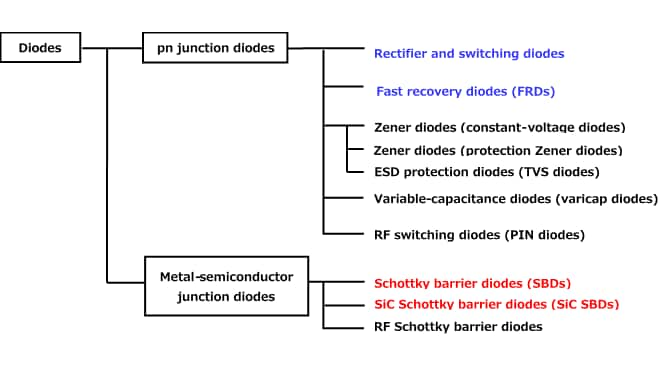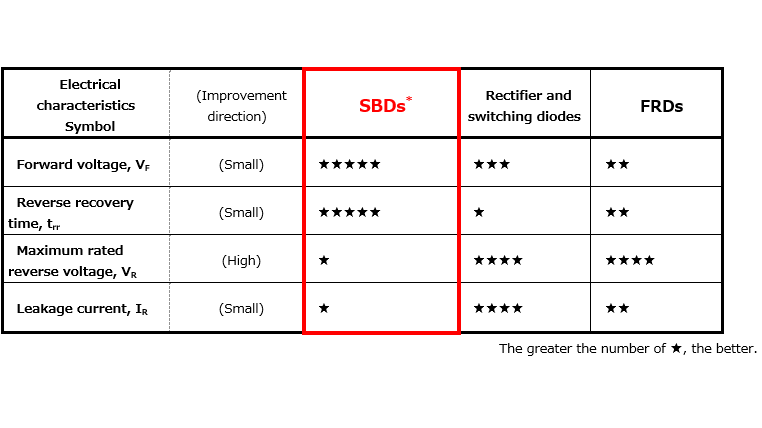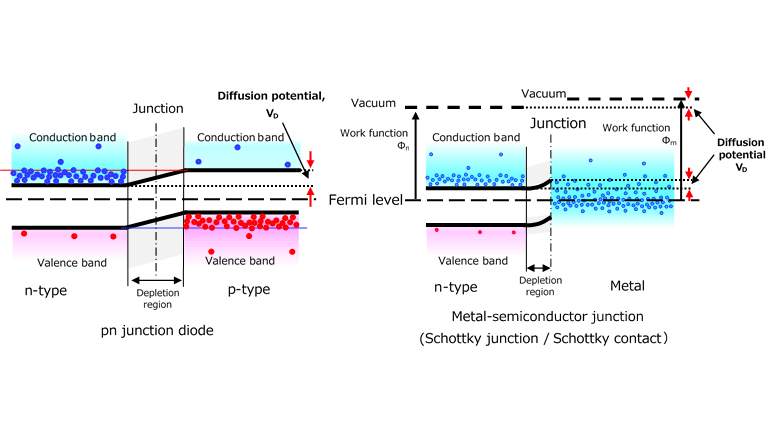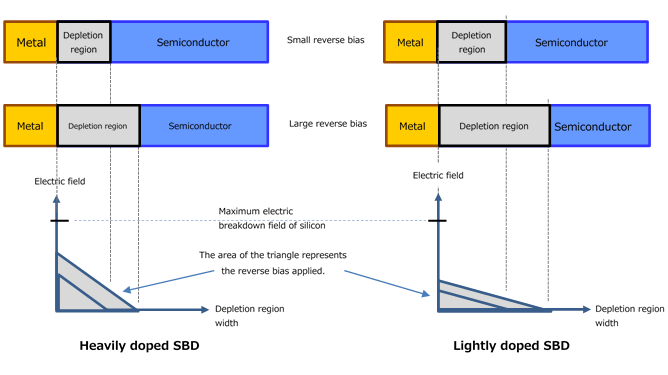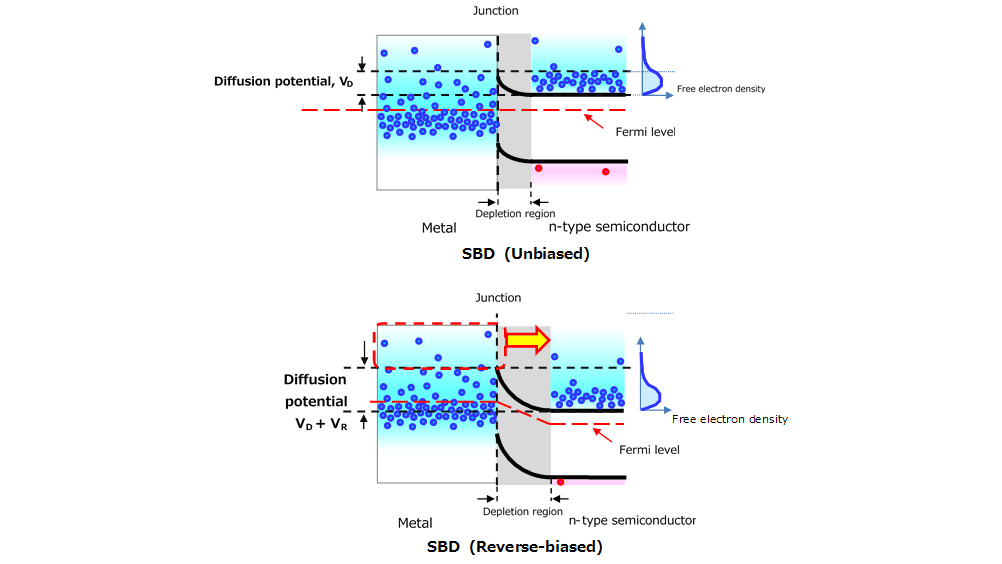- 半導體首頁
-
應用Automotive
Body Electronics
xEV
In-Vehicle Infotainment
Advanced Driver-Assistance Systems (ADAS)
Chassis
IndustrialInfrastructure
BEMS/HEMS
Factory Automation
Commercial Equipment
Consumer/PersonalIoT Equipment
Healthcare
Wearable Device
Mobile
Computer Peripherals
-
產品車用元件
Discrete Semiconductor
Diodes
電晶體
通用邏輯IC
Analog Devices
Digital Devices
Wireless Devices
※
: Products list (parametric search)
功率半導體※
: Products list (parametric search)
隔離器/固態繼電器Photocouplers
Digital Isolators
※
: Products list (parametric search)
MOSFETsIGBTs/IEGTs雙極性電晶體※
: Products list (parametric search)
Diodes※
: Products list (parametric search)
微控制器馬達驅動 ICs智能功率 ICs※
: Products list (parametric search)
電源管理 ICs線性 ICs※
: Products list (parametric search)
通用邏輯 ICs線性影像感測器其他產品其他產品
※
: Products list (parametric search)
-
開發/設計支援
開發 / 設計支援
-
技術知識
- 購買管道
- 型號 & 關鍵字搜尋
- 交叉搜尋
- 參數搜尋
- 線上庫存查詢跟購買
This webpage doesn't work with Internet Explorer. Please use the latest version of Google Chrome, Microsoft Edge, Mozilla Firefox or Safari.
型號需要超過三個文字以上 Search for multiple part numbers fromhere.
The information presented in this cross reference is based on TOSHIBA's selection criteria and should be treated as a suggestion only. Please carefully review the latest versions of all relevant information on the TOSHIBA products, including without limitation data sheets and validate all operating parameters of the TOSHIBA products to ensure that the suggested TOSHIBA products are truly compatible with your design and application.Please note that this cross reference is based on TOSHIBA's estimate of compatibility with other manufacturers' products, based on other manufacturers' published data, at the time the data was collected.TOSHIBA is not responsible for any incorrect or incomplete information. Information is subject to change at any time without notice.
型號需要超過三個文字以上
3-5. Reverse recovery time
When diodes and other semiconductor devices are on, current flows because of free electrons and holes (carriers). In addition, these carriers are accumulated as electric charge in the depletion region formed across a junction or in a parasitic capacitor and also accumulated in the lightly doped region as excess carriers. (This causes the above-mentioned conductivity modulation.) When these devices transition from the on state to the off state, they release electrons just like a capacitor. The resulting flow of electrons is observed as a current flow in the opposite direction.
The forward voltage (VF) is positive while the current (iF) is between zero and the peak reverse recovery current (Irr). During this period, the electric charge in the depletion region and the parasitic capacitor is mainly released, causing negative current to flow. Once iF reaches Irr, the excessive carriers (electrons and holes) that contributed to the conductivity modulation disappear because they recombine. Therefore, the time required for this recombination depends on the carrier lifetime.
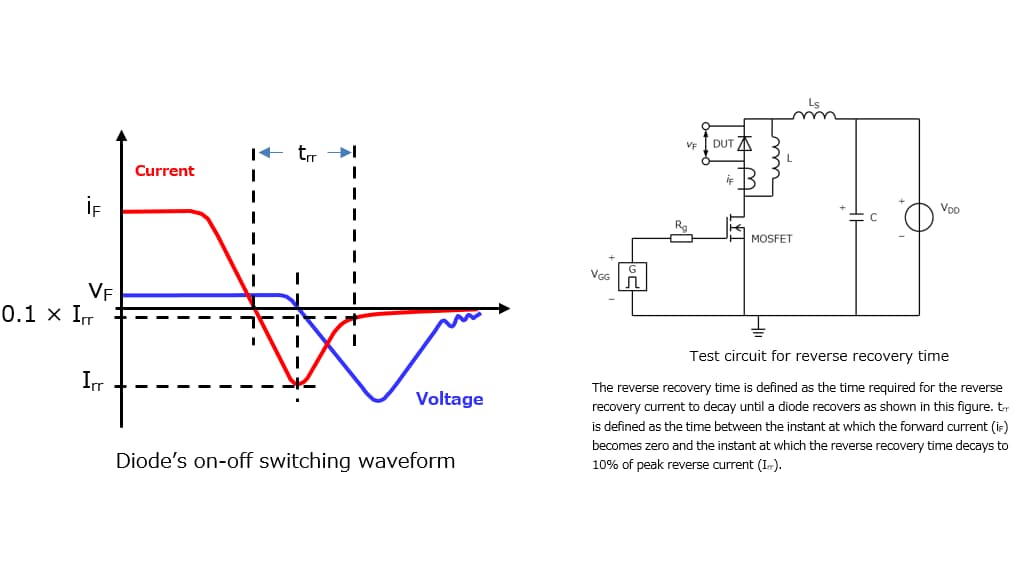
As described above, conductivity modulation occurs in bipolar devices such as pn junction diodes whereas theoretically it does not occur in unipolar devices such as SBDs. Therefore, SBDs exhibit almost zero reverse recovery time.
Figure 3-9 compares the reverse recovery characteristics of two typical pn junction diodes—the CRG09A rectifier diode (VR=400 V, IF=1 A) and the CMF02A fast recovery diode (VR=600 V, IF=1 A)—with the CMS20I40A SBD (VR=40 V, IF=2 A). Although it is difficult to make simple comparisons because their maximum rated reverse voltages are different, the reverse recovery time of the fast recovery diode (FRD) is much smaller than that of the rectifier diode whereas the reverse recovery time of the SBD is nearly zero.
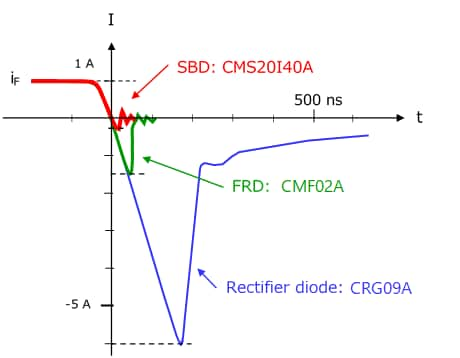
Chapter3 Basics of Schottky Barrier Diodes
Related information
- Products
Schottky Barrier Diodes - Application Notes
Application Notes - FAQs
Diodes - Parametric Search
Schottky Barrier Diodes - Stock Check & Purchase
Stock Check & Purchase


